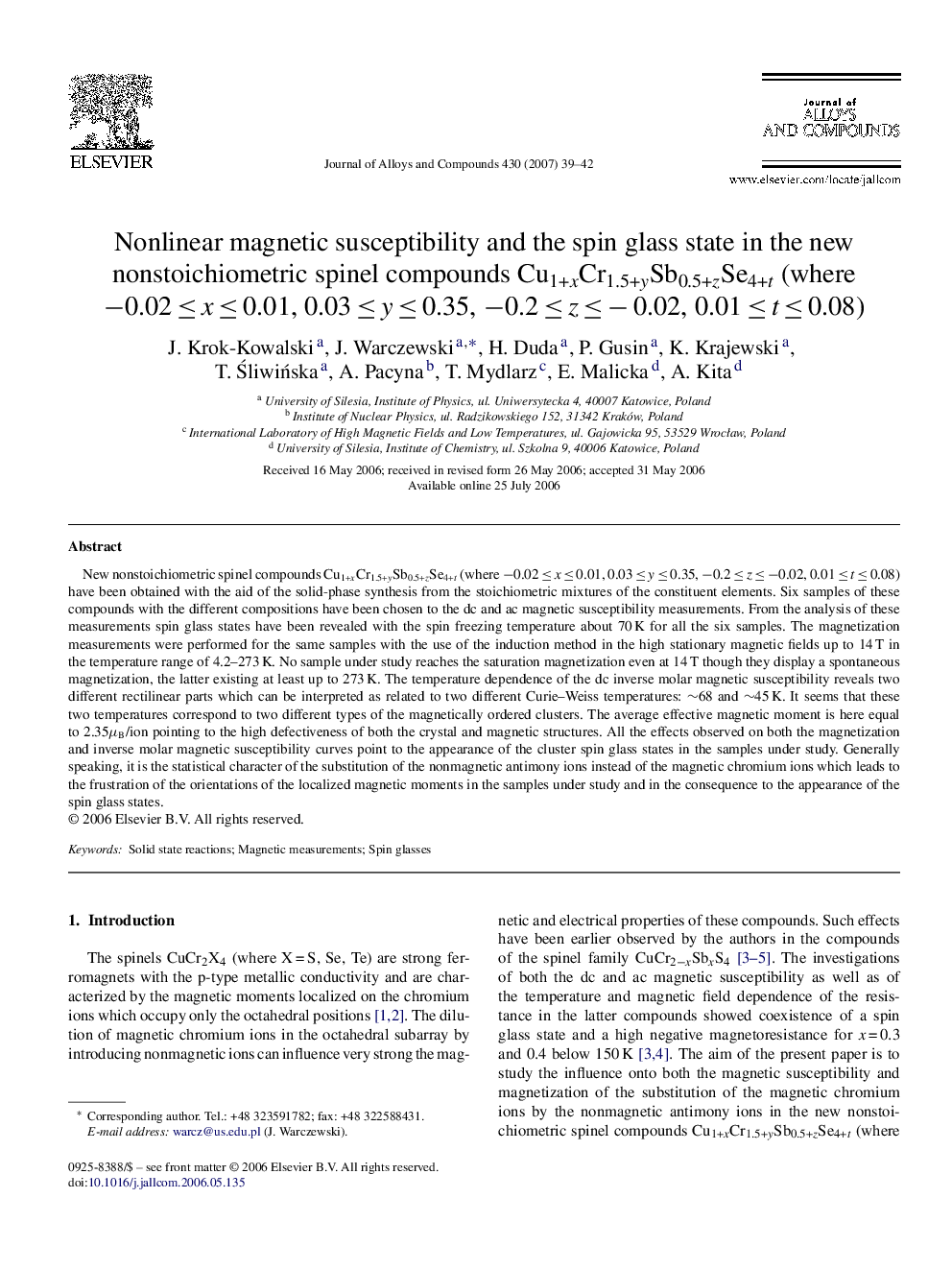| کد مقاله | کد نشریه | سال انتشار | مقاله انگلیسی | نسخه تمام متن |
|---|---|---|---|---|
| 1625999 | 1516443 | 2007 | 4 صفحه PDF | دانلود رایگان |

New nonstoichiometric spinel compounds Cu1+xCr1.5+ySb0.5+zSe4+t (where −0.02 ≤ x ≤ 0.01, 0.03 ≤ y ≤ 0.35, −0.2 ≤ z ≤ −0.02, 0.01 ≤ t ≤ 0.08) have been obtained with the aid of the solid-phase synthesis from the stoichiometric mixtures of the constituent elements. Six samples of these compounds with the different compositions have been chosen to the dc and ac magnetic susceptibility measurements. From the analysis of these measurements spin glass states have been revealed with the spin freezing temperature about 70 K for all the six samples. The magnetization measurements were performed for the same samples with the use of the induction method in the high stationary magnetic fields up to 14 T in the temperature range of 4.2–273 K. No sample under study reaches the saturation magnetization even at 14 T though they display a spontaneous magnetization, the latter existing at least up to 273 K. The temperature dependence of the dc inverse molar magnetic susceptibility reveals two different rectilinear parts which can be interpreted as related to two different Curie–Weiss temperatures: ∼68 and ∼45 K. It seems that these two temperatures correspond to two different types of the magnetically ordered clusters. The average effective magnetic moment is here equal to 2.35μB/ion pointing to the high defectiveness of both the crystal and magnetic structures. All the effects observed on both the magnetization and inverse molar magnetic susceptibility curves point to the appearance of the cluster spin glass states in the samples under study. Generally speaking, it is the statistical character of the substitution of the nonmagnetic antimony ions instead of the magnetic chromium ions which leads to the frustration of the orientations of the localized magnetic moments in the samples under study and in the consequence to the appearance of the spin glass states.
Journal: Journal of Alloys and Compounds - Volume 430, Issues 1–2, 14 March 2007, Pages 39–42